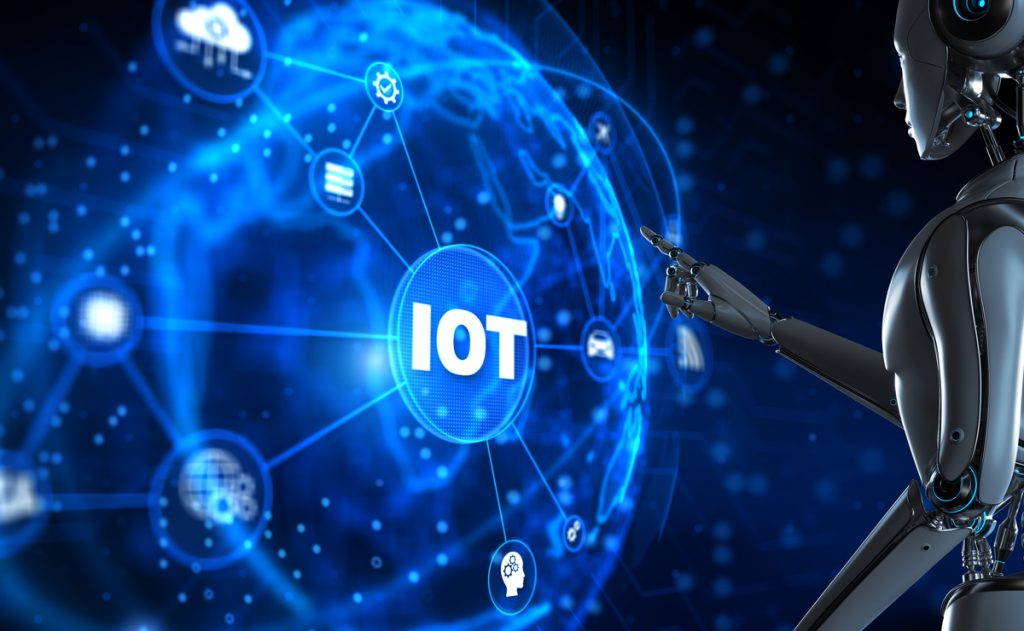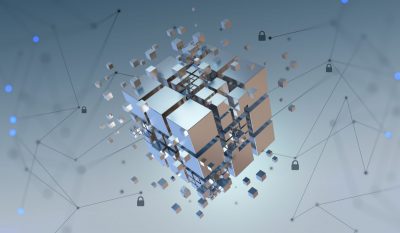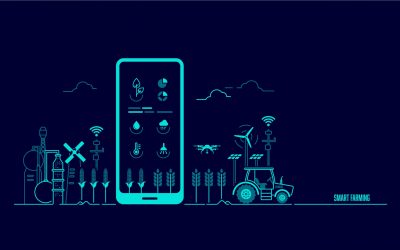The Internet of Things (IoT) is a remarkable outcome of the fourth Industrial revolution, of which we are in the initial stages. Early adopters, who could adapt their business to this technology, will gain a competitive edge in the following decade. With the emergence of any new technology, challenges related to adoption are bound to crop. Adoption has its own set of risks, challenges, and requirements that organizations need to know. Let’s get to know about them in detail:
What are the challenges of integrating the Industrial Internet of Things (IIoT)?
The following are a few potential issues organizations might face while adopting new technology.
- Investment costs: Implementing IoT in Industry 4.0 will require budgets to install new hardware, upgrade the existing ones, recruit skilled labor, build the infrastructure, et al.
- Security: There will be a huge amount of data transfer or migration to the cloud or in-house storage via network connectivity. The IoT devices will connect everything to the Internet, which increases the threat to their security. Besides hacking into the database servers or administrative computers, the hackers can hack the system itself.
- Infrastructure: It is a challenging task to acquire and execute technological and communication infrastructure, including database, WIFI, Internet, and other advanced tools designed to manage IoT.
- Obtaining hardware: Businesses need to select scalable hardware that is flexible enough to evolve and adapt to the organization’s present and future needs. An open, integrated hardware and software tool and a real-time network that adapts to new technologies with ease will help adapt to business requirements efficiently.
What are the requirements to implement IoT in Industry 4.0?
Following are a few requirements of IIoT:
- Cloud computing: Cloud servers allow you to store, process, and manage structured and unstructured data into real-time data.
- Access: Industrial IoT will call on the need for the system to be accessible from anywhere at any time.
- Security: Security is one of the requirements for implementing IoT as private and confidential data is shared throughout the business.
- User experience: Teams will be able to make the most out of IIoT systems if the user experience is smooth.
- Intelligent machines: Smart machines are the initial steps or the basic component from which connected things can be gained.
- Asset management: If the assets are managed through cloud-based services, it will simplify the working and maintenance of IIoT systems.
- Big data analytics: Big data analytics will give you valuable real-time analytics of your business data that help make strategic business decisions.
We have compiled a few best tips to integrate Big Data and analytics in Industry 4.0.
What are the risks of integrating IIoT?
As discussed earlier, IoT technology is in its initial stages of adoption, with very few defined standards. As a result, investing in it can be riskier than investing in any well-tried or established technology.
However, the IoT is also a robust tool that can transform businesses of every size, any sector, and industry and revolutionize lifestyle as well. This means implementing IoT will surely bring immense rewards to you and your business. If you become one of the early adopters, you will have an upper hand because you have a head start. Let us now have a look at the risk of integrating IIoT:
-
Implementation failure:
One of the most significant risks of IoT implementation is the failure to implement it in your business.
Chances may be that your production facility is based in an area with no fast internet connection. It is impossible to have reliable communication between the devices if you do not have a fast and reliable internet connection. As a result, your devices fail to have continuous data flow for storage and analysis.
There may also be a case where your business objective needs to accomplish multiple things in a small period. Gathering, accumulating, and transferring data over Wi-Fi is slower than using a PLC or a circuit board. However, for many IoT devices, the time lag does not matter. But if your business demands precision or needs real-time action, you will have to make strategic decisions – reconsider where IoT will be used, if it will be used at all – based on your requirement.
There might be a possibility that you do not have enough budget to implement the IoT. So here you are: You have all the expertise you need, a strategic IoT implementation plan, and your prototype delivers remarkable is working as expected. But then you realize the budget of full implementation of the plan, and it’s more than expected. In this case, you will not be able to implement it in one go.
Furthermore, it is crucial to choose scalable IoT devices to meet an organization’s current and future needs. Because one cannot predict your industry’s future requirements, you need to ensure the system seamlessly adapts to your business requirements and grows with it.
These are the probable implementation failure risks you need to consider before looking for an IoT solution. Hence, you must gain sufficient IoT knowledge to understand what works and what doesn’t regarding cost and efficiency. If you are firm in your decision to implement this technology, we recommend you have an overview of the best tips to integrate IoT in industry 4.0. If the costs are too expensive for your budget, you need to remember you are in the prototyping stage and can even scrape the idea. Because scarping the idea during the implementation phase will cost your business a substantial amount of money. However, it will be impossible to know whether it works or not without even trying.
-
Internet failure:
The Internet is yet another element that’s fundamental to the IIoT. Many of you might say that enterprises today are already dependent on the Internet to transfer files, to grant user access through central servers, e-commerce, client support, and executing other tasks. If the Internet is down, one can still execute tasks like working on local files or servers and continue manufacturing.
However, if, for example, your production is dependent on IoT technology, your product will stop whenever the Internet is down. Internet stability is one of the essential requirements of IoT to ensure continuous work. One must verify with the internet provider about the internet stability before considering implementing the industrial IoT.
-
Privacy and security:
Security is one of the primary concerns because if your business depends on the Internet, it will develop another risk of being invaded. Meaning, even a simple DDoS attack on your system can freeze your production. Furthermore, a full-blown cyber-attack will put your system at risk by allowing unauthorized access to sensors or your sensitive database.
Security breaches can have a devastating impact on your organization and its workflow. We have compiled a few data breaches that happened in the past:
Smart home devices (IoT) like Amazon Echo, Google Home, and other chatbots like Siri have recorded the user interactions without taking formal consent and shared them with the contractors for manual review. The experts reviewed the scenario and shared the happenings. Being global brands, this initiated a debate about the privacy and security of private citizens.
LocationSmart is a geolocation organization that mistakenly allowed users to spot the location of any five U.S carriers (including Verizon and AT and amp;T) and three Canadian carriers without the requirement of credentials. The location data was being shared by the carrier itself, but after the news of the data breach broke, the carrier immediately rectified its mistake and stopped sharing the location access.
Following are a few measures to avoid the security risk of IoT:
-
Endpoint security:
All the computers that collect your data are endpoints. These might be edge computers that collect data in real-time from sensors, local systems, some protocols, and computers after being intercepted. They do so to store the information on a local server or transfer it to a cloud server for storage. The storage systems and systems used by data analysts will exchange the data from storage.
Endpoint security is one of the essential ways to keep your systems away from attackers. You can choose from endpoint securities like anti-virus software, firewalls, anti-malware, and others as per your requirement. It will protect malicious attackers from reaching your devices and spreading through the network.
However, consumer products may not be sufficient to handle the magnitude of data that has been shared, transferred, or processed. Because the IoT devices share data quickly in real-time and cannot slow down the data transfer. Depending on your needs, you might need a customized endpoint security infrastructure to protect your servers. You need to ensure that the endpoint security solution you use in the IoT network should work in real-time and not stop the data flow.
-
Communication protocols:
You need to set efficient communication protocols to ensure that all the interactions between the systems happen by your company’s asset following all the protocols set by you; this is called digital bureaucracy. As one interaction starts, your system should understand if it is a good idea to initiate a conversation. You can set a series of steps to initiate or terminate the communication with another computer or device.
Additionally, you can also implement a digital signature at every connection, which gives you the right to access it and implement it into the software.
-
Access control:
You must set access protocols and authenticate every user. This means creating multiple users in a central server that can be used in other computers or locations on your network. Based on their job role, you can grant or restrict access to the user’s database, server, system, sensors, and other devices. It is a perfect way to prevent malicious activities because it does not give access to information that is not meant to be accessed. For instance, you can implement two-factor authentication, biometric scans, access cards, digital signs, and strong passwords to prevent data breaches.
The central network should overview the ports and data transfer within the network and keep an eye on external communications. Virtual Private Network (VPN) can help secure networks by encrypting traffic, masking IP, and interception. However, choosing a reliable VPN provider is essential; otherwise, your data will still be at risk.
-
High-end encryption:
Encryption will help prevent data breaches because the data is transferred in binary format through an algorithm with an encryption key. You can design the algorithm or key in a way you want the data to come out. Only the algorithms and data will gauge how the data will come out. The outgoing data is unreadable with no apparent format. Here, the data is transferred within the network to another computer. Passing it and the encrypted data through another algorithm will recreate the original data.
Wrapping it up:
The IoT is in its early stage of being adopted, but an IoT network’s effective use can deliver exceptional results for your organization. Implementing a new technology Like IoT can be filled with risks, challenges, and requirements. However, the IIoT is a robust technology that can revolutionize business operations.
We have an extensive list of latest IoT whitepapers that cover a wide range of aspects, feel free to browse more.













